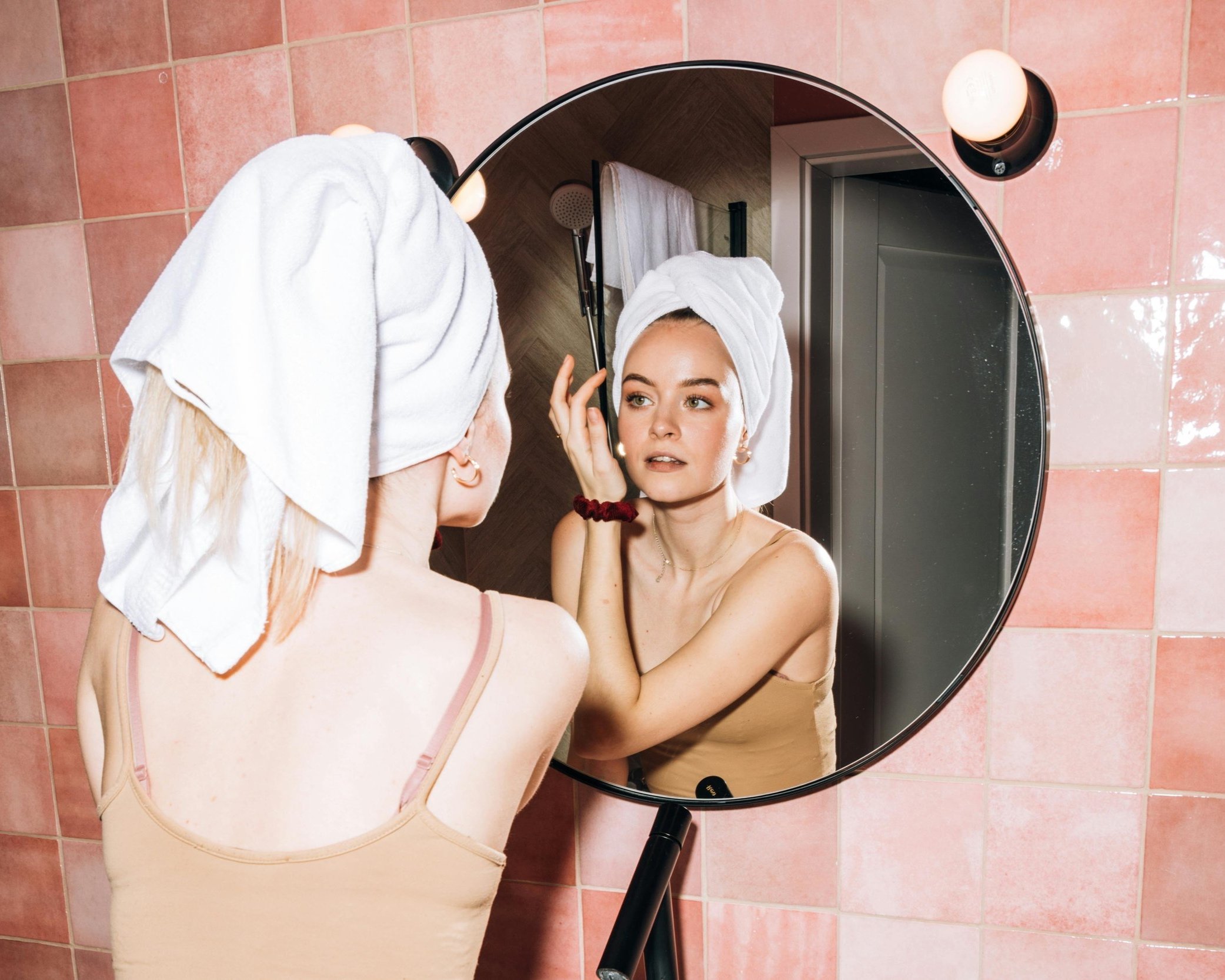THE REFLECTION FALLACY: WE WERE NEVER MEANT TO SEE OURSELVES THIS MUCH
By Nicole Fuge
There is a beautiful video going viral right now, a quiet clip that has sparked loud thoughts. In it, creator Avi Gill introduces a theory… we were never meant to see ourselves this much.
And after you watch it, it truly makes you pause and reflect (pardon the pun).
Because when you think about it, this endless access to our reflection is a relatively new phenomenon in the grand scope of human history. And yet, it’s changed everything. The way we feel about ourselves. The way we move through the world. The way we judge our worth.
So let’s take a look back, from still water to smartphone cameras, and ask: What happens when we see ourselves too much?
REFLECTION WAS ONCE RARE
In ancient times, the only time we caught a glimpse of ourselves was in water. Fleeting, rippled, distorted, a reflection that was more poetic than precise. It came and went with the light and the wind, so we didn’t have the chance to analyse or obsess. We lived mostly unseen by ourselves, shaped more by the people around us, by how we felt, than by how we looked.
This was a time when self-perception wasn’t visual, it was social, spiritual, emotional. And maybe that wasn’t such a bad thing.
THEN CAME THE MIRROR
When humans created mirrors, first polished metal, later glass; everything changed. For the first time, we could hold our reflection. We could examine it, critique it. And that shift introduced something subtle but significant: the start of performing for our own gaze. The beginning of separating who we are from how we appear.
THE CAMERA MADE IT PERMANENT
Where the mirror gave us a moment, the camera gave us forever.
Photos (and later videos) froze our image in time, something previous generations could never do. At first, it was magic. Portraits to remember. Smiles to hold onto. But permanence brought pressure. A photo could be flattering, yes, but it could also be unforgiving. We started curating. Posing. Retaking. Deleting. Manipulating. We stopped simply being in the moment, and started managing how the moment looked.
And when social media arrived, that curation became constant.
THE DIGITAL SELF: TOO MUCH REFLECTION, NOT ENOUGH REALITY
With camera phones, filters, and front-facing screens in every pocket, we’re now in a time where we see ourselves more than any humans in history.
This constant self-reflection can fracture our self-worth. We are hyper-aware of our image. We develop a phantom self; a version of us that exists for the gaze of others. The one we edit and polish and post. The one we sometimes confuse for the real us.
And it’s exhausting… isn’t it?
SO WHAT NOW?
Maybe the lesson is this: just because we can see ourselves all the time doesn’t mean we should.
Here’s what we can try instead:
Put down the phone. Not everything needs to be captured. Not every moment needs a selfie.
Check in with how you feel, not just how you look. Your body, your face, your life; they’re not for performance.
Reclaim the unseen. Let yourself be lived-in, messy, unfiltered. There’s freedom in forgetting what you look like for a while.
Remember that your worth isn’t in your reflection. It’s in how you love. How you show up. How you exist beyond the gaze.
THE FUTURE OF SELF-IMAGE
As tech continues to evolve; with AI beauty filters, augmented mirrors, and digital doubles, the reflection fallacy will only grow louder.
But so can our awareness.
Maybe the antidote to being seen all the time is learning how to truly see ourselves; not in pixels or glass, but in presence. In gentleness. In connection.
Because at the end of the day, the truest reflections of who we are don’t come from the outside in, they shine from the inside out.
MUSE PAPER
ISSUE 05
